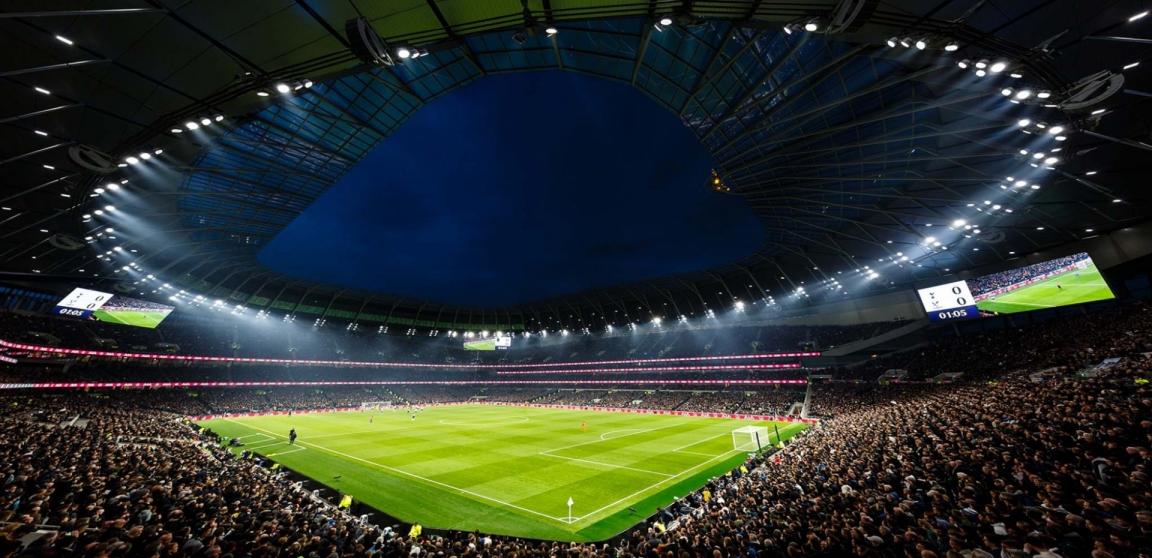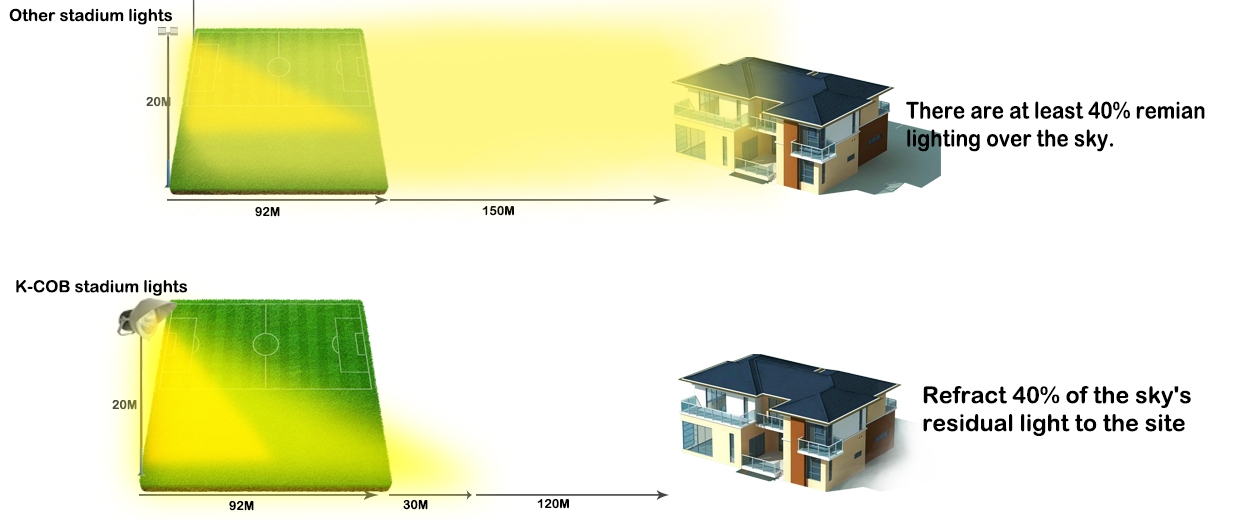Stadium lighting plays a crucial role in enhancing the experience at sporting and entertainment events, ensuring visibility is optimal for both participants and spectators. Proper lighting not only facilitates player performance and audience enjoyment but also supports broadcasting requirements by providing clear and consistent illumination. Understanding the costs associated with stadium lighting is essential for venue managers and event organizers, as it involves significant investment in installation, operation, and maintenance. This introduction sets the stage to explore the various elements that contribute to the costs of stadium lighting, highlighting why it’s a critical investment for the success of events held in these large venues.
Importance of Stadium Lighting
Enhancing Visibility for Players and Spectators
Stadium lighting is fundamental in providing the necessary visibility for players to perform at their best. It ensures that the ball or other play objects are clearly visible, which is crucial for fast-paced sports. For spectators, both on-site and those watching broadcasts, high-quality lighting enhances the clarity of the action, improving their viewing experience.
Creating an Engaging Atmosphere
Lighting extends beyond functionality; it is instrumental in creating an atmosphere that can electrify a stadium. Through dynamic lighting solutions, stadiums can support team colors, create light shows, and adjust intensities, which all contribute to the excitement and engagement of the audience during events.
Ensuring Safety and Security
Effective lighting is a key safety feature in stadiums. It helps in crowd management by clearly illuminating exits and pathways, reducing the risk of accidents and enhancing overall security. Well-lit spaces deter criminal activity and help security personnel monitor and manage the crowd more effectively.
Components of Stadium Lighting Systems
Types of Lighting Fixtures
Stadiums utilize a variety of lighting fixtures to meet their extensive needs. The most common include metal halide and LED lights. Metal halide lamps have been the traditional choice due to their high brightness and wide coverage. However, LED lighting is becoming increasingly popular because of its energy efficiency, longer lifespan, and better control over light pollution.
Control Systems and Automation
Modern stadiums are equipped with advanced control systems that allow precise management of lighting. These systems enable operators to adjust light settings for different events and conditions. Automation in lighting systems can also be synchronized with game events or entertainment segments, providing a seamless experience for attendees.
Maintenance Requirements
Maintaining stadium lighting requires regular inspections and timely replacements of fixtures to ensure optimal performance. The maintenance plan includes routine cleaning of lights, checking for electrical issues, and replacing bulbs or components that have worn out. Advanced lighting systems like LEDs typically require less maintenance compared to traditional lighting, which can lead to cost savings in the long run.
Factors Influencing Stadium Lighting Costs
Size and Layout of the Stadium
The cost of stadium lighting is greatly influenced by the size and layout of the venue. Larger stadiums require more fixtures to adequately cover all areas, which increases the overall cost. Additionally, the design and accessibility of installation points can affect the complexity and expense of setting up the lighting system.
Type and Quality of Lighting Fixtures
The choice of lighting fixtures significantly impacts costs. High-quality, durable fixtures such as LEDs might have a higher upfront cost but offer longer lifespans and reduced maintenance costs. In contrast, cheaper options might lead to higher long-term expenses due to frequent replacements and higher energy consumption.
Energy Efficiency Considerations
Energy efficiency is a critical factor in managing long-term lighting costs. Energy-efficient lighting systems, while potentially more expensive initially, can significantly reduce electricity usage and costs over time. Technologies like LEDs are favored for their lower energy consumption and reduced environmental impact.
Installation and Labor Costs
The complexity of the installation and the labor involved can substantially affect the total cost. Specialized equipment and skilled labor are required for the installation of high fixtures in large stadiums, which can be costly.
Regulatory Compliance and Permits
Meeting local regulatory standards and obtaining the necessary permits can add to the cost of stadium lighting. Compliance with safety, environmental, and light pollution regulations may require additional investments in specific types of technology or installation practices.
Cases: Examining Stadium Lighting Expenses
Case Study 1: Large-Scale Stadium with Traditional Lighting
A prominent example involves a major sports stadium that utilized traditional metal halide fixtures. The initial costs were lower, but the stadium faced high energy bills and frequent maintenance issues, leading to higher overall expenses.
Case Study 2: Smaller Stadium Utilizing LED Technology
A smaller regional stadium adopted LED lighting technology, focusing on long-term sustainability and cost-efficiency. The upfront cost was significant, but the investment paid off with drastically reduced energy consumption and minimal maintenance needs.
Comparative Analysis of Costs and Benefits
Comparing these case studies, the smaller stadium with LEDs shows a better cost-benefit ratio over time, despite the higher initial investment. The larger stadium, while cheaper initially, incurred greater costs in energy and maintenance, illustrating the importance of considering long-term efficiencies when planning stadium lighting.
Strategies for Cost Reduction
Implementing Energy-Efficient Lighting Solutions
One effective strategy for reducing costs in stadium lighting is implementing energy-efficient solutions like the CAS CERAMIC SPLC series. Designed specifically for large venues such as golf resorts and soccer fields, this high-power LED fixture features a single 1600w Phosphor Ceramic COB, high efficacy reflector, and a dual heat pipe heatsink. Its design is patented in China, Korea, Japan, and the USA, making it ideal for both new installations and energy-saving retrofits.
How It Saves Cost
- Dual Heatsinking Channel for KCOB: The KCOB is designed with a self-invented phosphor ceramic, providing a secondary channel for heat dissipation. This structure allows the heat from the chip to be conducted through both the PCB and the phosphor ceramic cover, increasing heatsinking space by 40% and improving heat conductivity by 30%.
- Dual Heatpipe Heatsink: The innovative heatsink design uses two layers of heatpipe instead of one, addressing the concentrated heat from a 1200w, Φ75mm LED chip. The minimized contact area between fins and pipes, along with a reversed 360° air vent, transforms the aluminum body into a highly efficient heat conductor, making the heatsink both compact and lightweight.
How Much Does Sports Field Lighting Cost?
The cost of sports field lighting can vary significantly based on the brand, quality of the LED sports lights, and the scale and illuminance level of the stadium. KCOB, as a professional lighting designer and lamp manufacturer, offers competitive proposals tailored to each stadium’s needs, ensuring cost-effective and efficient lighting solutions. For specific pricing and designs, reaching out to KCOB directly is recommended.
CONCLUSION
Stadium lighting is a critical component of modern sports and entertainment venues, playing a key role in improving visibility, ensuring safety, and enhancing the overall atmosphere. Grasping the intricacies of lighting—from the selection of fixtures to the financial implications—is crucial for effective management and optimization. Adopting energy-efficient solutions like the CAS CERAMIC SPLC series can markedly decrease operational costs and boost sustainability. By prioritizing advanced technologies and efficient designs, stadiums can enhance lighting performance while reducing environmental impact and operational costs. Ultimately, investing in high-quality lighting goes beyond mere illumination; it significantly enhances the experience for all participants, guaranteeing that each event is both visually stunning and securely enjoyed.
Post time: May-24-2024






